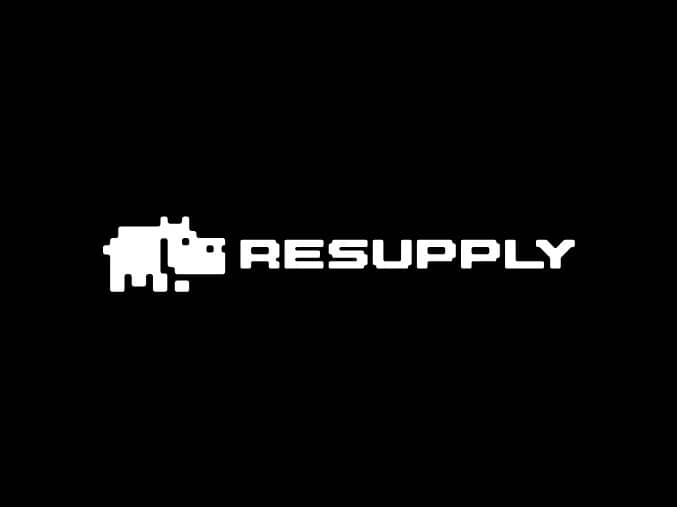Subscribe to wiki
Share wiki
Bookmark
Resupply
We've just announced IQ AI.
Resupply
Resupply is a decentralized stablecoin protocol designed to allow users to borrow its native stablecoin, reUSD, by using yield-bearing stablecoin lending positions as collateral. The protocol aims to enhance the capital efficiency of stablecoins deposited into established lending markets.
Overview
Resupply operates as a subDAO protocol developed by Convex Finance and Yearn Finance, in collaboration with other entities in the decentralized finance (DeFi) space. Its core function is to enable users to deposit specific yield-bearing stablecoin positions, such as those from Curve Lend or Fraxlend, and borrow reUSD against them. This mechanism allows users to continue earning yield on their initial stablecoin deposits while simultaneously utilizing the borrowed reUSD for other purposes, potentially increasing overall capital efficiency.
The protocol was introduced in December 2024 and officially launched in March 2025. It facilitates the creation of Collateralized Debt Positions (CDPs) where the collateral is a token representing a deposit in an external stablecoin lending market. As of June 2025, the protocol reported metrics including total reUSD borrowed and total collateral value. [1] [2] [3] [4] [5] [6] [7]
How it Works
The fundamental process involves a user depositing an approved yield-bearing stablecoin token into Resupply. Currently, accepted collateral types are tokens representing deposits in specific Curve Lend or Fraxlend markets using crvUSD or frxUSD. Once the collateral is deposited, the user can borrow reUSD against this position. The deposited collateral continues to earn yield in its original lending market, while the user gains access to reUSD liquidity.
The amount of reUSD a user can borrow is subject to a collateral ratio, similar to other CDP systems. If the value of the borrowed reUSD plus accrued interest grows too large relative to the collateral value, the position may be subject to liquidation, which is handled by the protocol's Insurance Pool. [3] [4] [7]
Collateral Types
Resupply currently accepts two primary types of collateral:
Users deposit the tokens representing their position in these external lending markets, not the base stablecoins directly into Resupply. [3] [4] [8]
reUSD Stablecoin
reUSD is the decentralized stablecoin issued by the Resupply protocol. It is backed by the yield-bearing stablecoin collateral deposited by users. The protocol incorporates stability mechanisms, including redemptions, designed to help maintain reUSD's peg to the US dollar. [3] [9]
Borrowing Rates
The interest rate for borrowing reUSD is dynamically calculated to remain competitive. The rate is determined as the higher value among three factors:
- Half of the lending rate of the specific collateral market.
- Half of the sfrxUSD rate.
- A minimum rate of 2%.
This structure aims to ensure that borrowing reUSD remains attractive compared to alternative borrowing options or simply lending the base stablecoins. [3]
Insurance Pool
The Resupply Insurance Pool serves as a critical safety layer for the protocol. It has two main functions:
- Liquidation Mechanism: The pool provides funds used to liquidate user positions where the borrow balance (including interest) exceeds a certain threshold relative to the collateral value. The pool earns a fee when it is utilized for liquidations.
- External Risk Reserve: It acts as a reserve to protect the protocol against unforeseen risks associated with the approved external lending collaterals. If a collateral type encounters issues, the pool can be used to repay outstanding reUSD debt associated with that collateral and attempt to recover value by selling the distressed collateral, thereby mitigating potential bad debt for the protocol.
Users can deposit reUSD into the Insurance Pool, accepting a share of the associated risks. In return, these users receive a portion of the protocol's revenue and RSUP emissions. [10] [3] [11] [12]
Governance
Resupply is governed by holders of the RSUP token. The RSUP token is used for staking, which provides participants with a variable Annual Percentage Rate (vAPR). Governance decisions are made through proposals and voting mechanisms. The distribution of RSUP tokens, including emissions and potential airdrops, is outlined in the protocol's tokenomics. A proposal related to the shutdown of Prisma Finance and distribution of RSUP tokens to PRISMA holders was posted in December 2024. [3] [13] [14] [11] [17] [15] [16]
Technology and Security
The Resupply protocol is built upon immutable and non-custodial smart contracts. The smart contracts have undergone peer review and security audits. The non-custodial nature means users retain control of their underlying assets deposited as collateral within the external lending markets. [18] [3]
Partnerships
Resupply was developed by Convex Finance and Yearn Finance. The protocol also states it collaborates with other "DeFi trusted leaders". [1] [2] [3]
Milestones and Performance
Resupply was introduced on December 18, 2024 and officially launched on March 20, 2025. In its first week, the protocol generated $44.7k in fees, with $35m in reUSD minted backed by $42m in collateral. By early April 2025, total fees generated since launch reached $345k. As of June 2025, the protocol reported approximately 122m reUSD borrowed against $135m in total collateral. [5] [6] [19] [20] [3] [21]
See something wrong?
